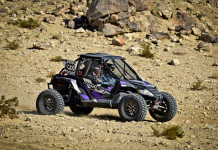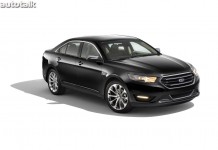WASHINGTON: Pentagon officials hosted their fourth annual motorcycle safety event May 8 here to rev up interest in learning the right way to ride.
World-class riders including Keith Code, the director of the California Superbikes School, and Jeff Tilten, the co-producer of the safety film “Semper Ride,” came out to lend support and show their skills during demonstrations to reinforce the message to both riders and military leaders that it takes training to handle motorcycles.
Several years ago a rise in the number of servicemembers getting injured or killed in off-duty motorcycle accidents drove the creation of the annual joint-service event, said Tad Davis, the deputy assistant secretary of the Army for environment, safety and occupational health.
“We had a situation where we were losing about 20 (servicemembers) a year, (then) in 2006 it doubled,” he said. “That’s when, bells and whistles went off.”
Mr. Davis said the growing popularity of motorcycles contributed to the alarming numbers. From 1999 to the present, “we went in this nation from about 2 to 3 million to over 8 million people riding bikes.”
In the Army alone, he noted, “we have over 100,000 soldiers and civilians riding motorcycles.”
Newcomers to riding are at high risk, Col. Earle Thompson said. “If you take a guy that’s never ridden before and he goes out and buys a 600cc sports bike, he can very easily let that (bike) get away from him in a hurry.”
The two-day safety event held in a Pentagon parking lot has grown each year in size and scope. More than 1,000 defense officials, servicemembers and civilians were expected to turn out to watch freestyle motocross and street bike freestyle shows and participate in other activities. This year also marked the first appearance of professional riders from the Semper Ride team of Marine motorcyclists.
Among first-time visitors was Army Master Sgt. David Newmer, who was wounded on his third tour of duty in Afghanistan and is recovering from a fractured leg and internal injuries at Walter Reed Army Medical Center here. Despite the inherent risks of motorcycles, Sergeant Newmer said, he plans to ride again as soon as his leg heals. The key to safety is to take advantage of training opportunities.
“There’s no excuse,” he said. “The Motorcycle Safety Foundation has a big network, and (training) is available to each and every rider, regardless of experience.”
Navy Rear Adm. Arthur Johnson, commander of the Naval Safety Center, agreed that inexperienced riders driving at excess speeds cause the most accidents. Military leaders simply discouraged motorcycle enthusiasts in the past, he added, but a new mindset is to facilitate safety awareness and training “so our people can be successful with this high risk activity.”
That new attitude brought in Keith Code four years ago to customize a training course, called the Advanced Motorcycle Operators School for the military. The champion rider and instructor announced some results.
“As of today,” he noted, “none of the over 700 riders trained in the AMOS program have had any serious mishaps.”
More recent statistics show that the military’s emphasis on safety is paying off. Navy officials report that motorcycle fatalities dropped by 61 percent in 2009 over prior years. The Army also has seen a significant drop in fatal accidents.
However, Mr. Davis said, it’s imperative not to become complacent. He warned that motorcycle skills are perishable, and he recommended that riders renew training at least every three years.







